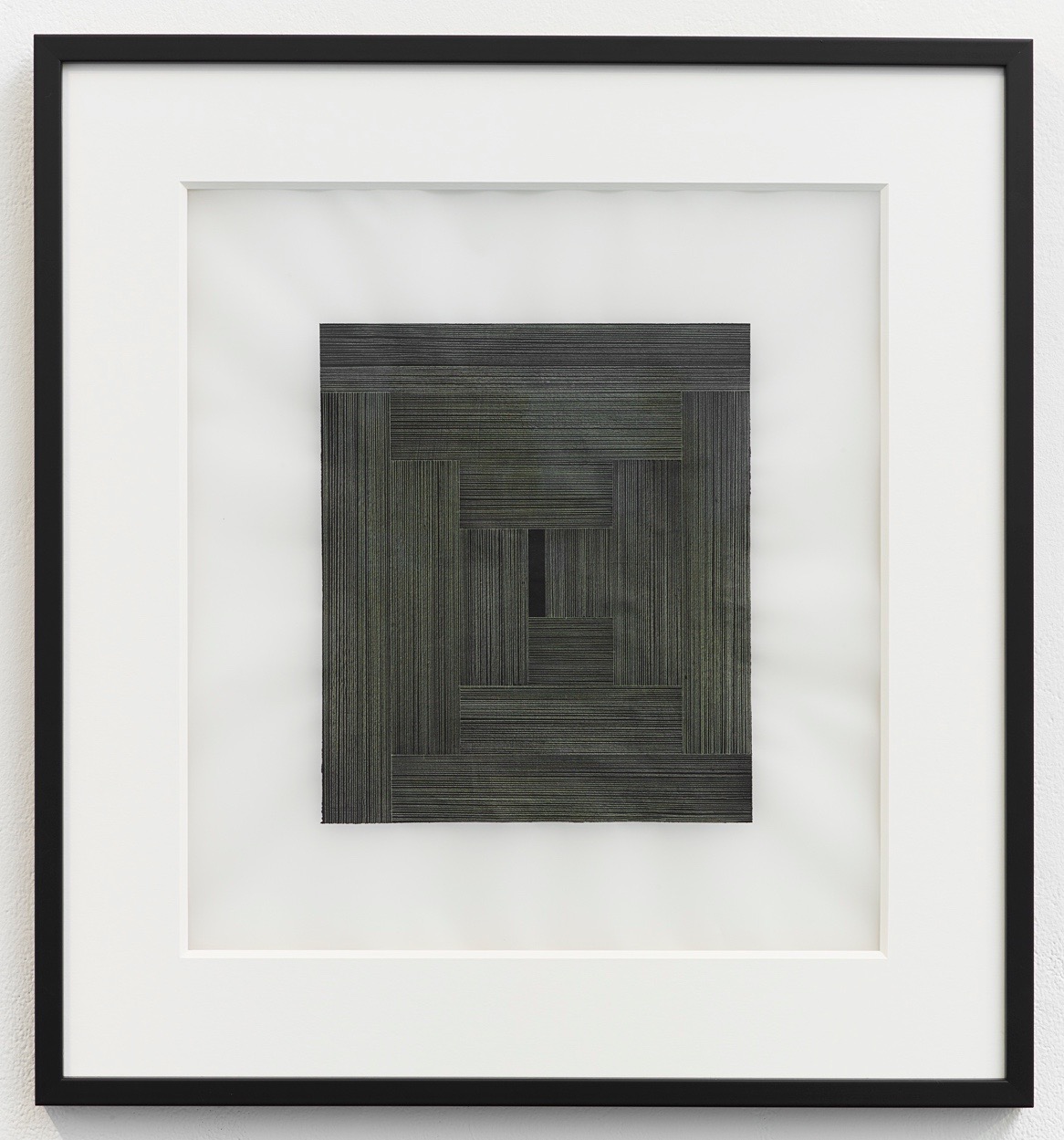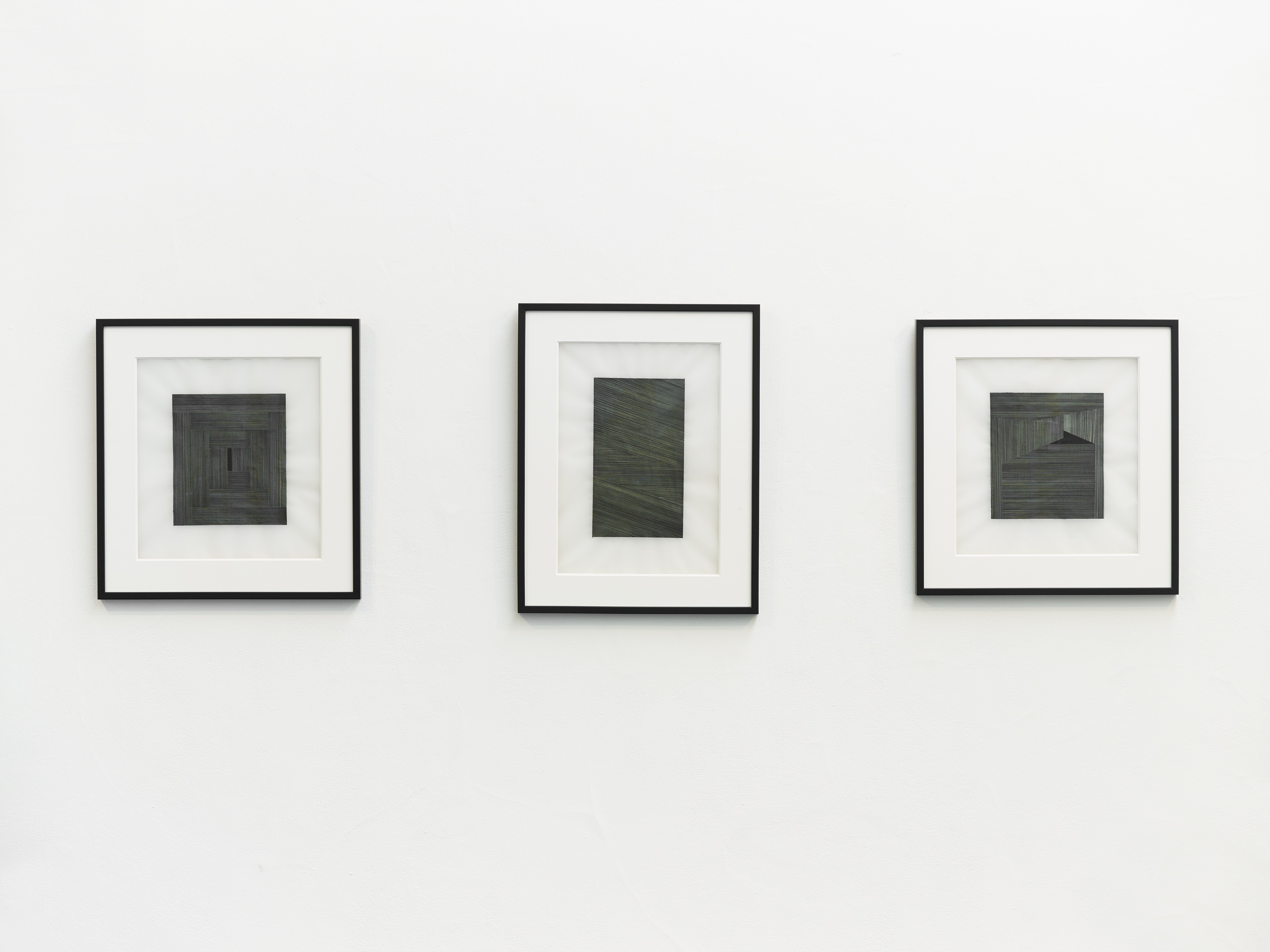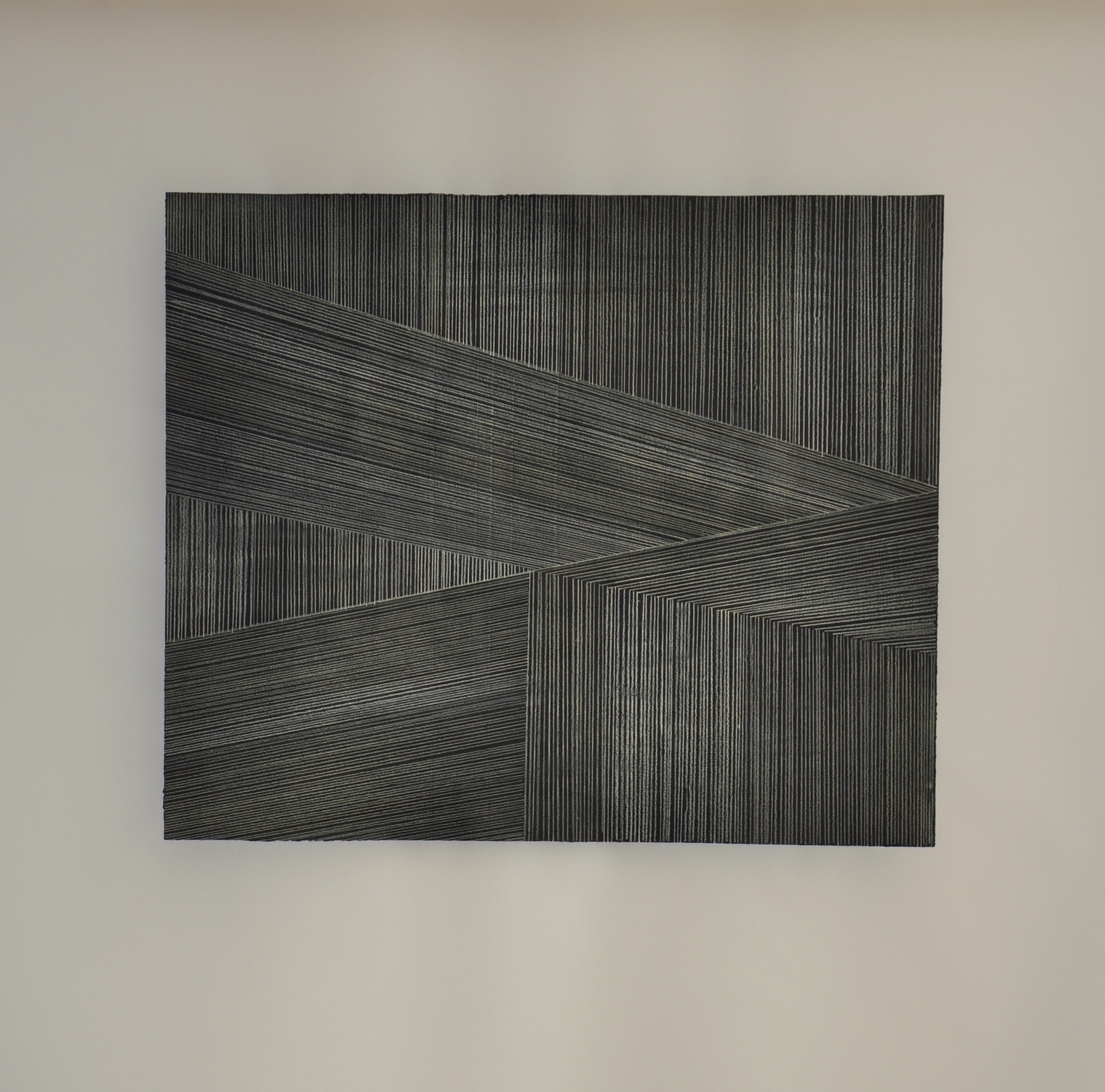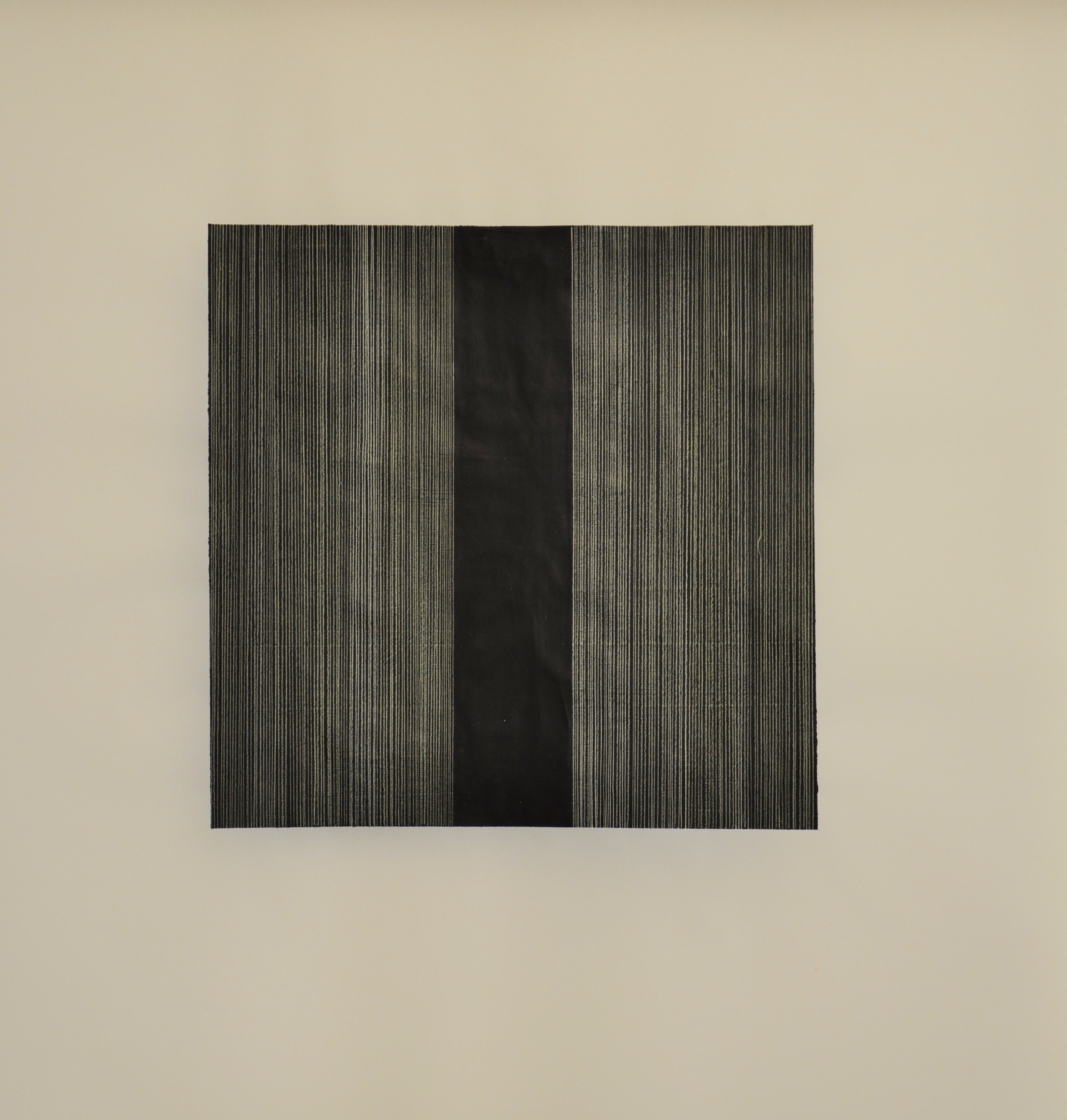Kelly Best
Interview by Lydia Meehan
Published December 2015
-
Kelly Best combines the intimacy of the act of drawing with the physicality of three dimensional works. Working both on paper and within the gallery space itself, Best manages to bridge the gap between traditional processes and progressive presentation.
-

Kelly Best & Mark Houghton
Many of your works on paper seem to have a strong spatial element. Could you explain a little about the relationship between your drawings and your sculptural works within this context?
I began thinking more sculpturally last year when I met the artist Mark Houghton. We started chatting at an event and after swapping website addresses we started conversations and a working partnership that continues in some form today. We spent the year discussing our practices and ideas. It was strange how much our work overlapped even though I was working solely two-dimensionally and Mark was working much more sculpturally. G39 in Cardiff gave us our first opportunity to work together during their Unit(e) season. We spent the two months working in a very free and experimental environment, with both the encouragement and critical voice of the other artist, as well as the from the people at g39. We were very strict and committed ourselves to a routine of constant change and experimentation, never leaving an idea finished, always trying to move it forward. I think this enforced a sense of liberation within my practice, especially from my painting background where it was often too easy to become stuck in a state of dissatisfaction of the unfinished paintings, yet being too afraid to make the next mark for fear of ruining all that has previously been achieved. I began working through ideas three-dimensionally, admittedly not wholly successfully. This translated into my drawings, which began to occupy positions such as the floor which are more associated with sculpture than drawing. It also started me thinking about my work as a whole, including its presentation. Site specific considerations and positioning became suddenly very important. I think this all feeds into my current practice whether it be a conscious decision or one arrived at more intuitively.

Kelly Best & Mark Houghton
Were you surprised to find that Mark's sculptures were so coherent to your two dimensional work? What overlaps did you find?
I was more surprised by the fact that we were able to work alongside each other for such a long time, and it being so successful. Working collaboratively was not something I had considered I would, or even could do. Working as a painter more often than not means working in isolation, which has its pros and cons, and is equally as gratifying as it is frustrating. It has been fantastic to be able to share those thoughts, doubts and joys with someone who is experiencing the same feelings and shares the same concerns.

Kelly Best & Mark Houghton
Would I be right in saying that space or illusion of space has equal importance in your works on paper as it does in your more recent installation and sculptural works?
The sculptural and installation works are really just an extension of the drawings and paintings that I make on paper or canvas. I don’t really see any particular format or medium having more importance than the other, so yes, in a way you are right. Making work is a continuous cycle of trial and error, always pushing to reach some kind of resolution between materials, composition and presentation. When making a site specific work you need to think about presentation and location very carefully. Who are the audience and how the work will interact with any number of competing stimuli, both visual and aural? With a drawing on paper it is already confined within its own arena so it should hold its own.

Velum, Coloured pencil on wall, 2015
You’re currently working on Jerwood Encounters: 3 Phase, a new artist development collaboration between artist-led organisations Eastside Projects (Birmingham), g39 (Cardiff) and Jerwood Charitable Foundation. This will see you having an exhibition at each of the participating artist-led spaces. Could you explain a little about the work that you have chosen to make?
I wanted to develop ideas of possibilities, multiple arrangements and placement of a work. The starting point was an extension of some drawings I had made last year. This particular series of drawings allowed for audience participation in order to create different forms and in making new connections within the drawings.
The solo exhibition in Gallery 2 at Eastside Projects provided the opportunity to create a large scaled piece. Velum has been constructed from 12 sections that can be separated and potentially rearranged which lends to the possibility for development as the project continues to the other spaces.
I had a team of people making the drawing with me. At first it was odd handing over control to people I had never met before. It’s an interesting concept to me, having other people drawing, but it is something that really enhanced the work as the subtle differences in each individual persons application of the marks introduced more rhythm into the drawing. The intimacy of the drawing also surprised me. I wasn’t expecting that from such a large drawing.

Block

Block
You described earlier a ‘state of dissatisfaction of unfinished paintings’ and how your collaboration with Mark Houghton liberated you to push for continued change in your work. With Velum being constructed in this way, there are varying potentials to the outcome in each new setting, so you can feel that impact of this collaboration. Does it still give you a sense of liberation?
It should do, but somehow I feel it has worked in the opposite way. At the moment, constructing a work which is designed to be reconfigured feels as though it has limited the creative process, especially as I am satisfied with its first instalment at Eastside Projects. I am looking forward to getting the individual pieces into the gallery so I can work with them in a more hands on, process led format again.

Block

Block
You mentioned previously your thought process around how an audience interacts with the work, visually and aurally. Is there a particular interaction that you hope to achieve (visually and aurally) when deciding on the arrangement of the individual sections of Velum?
The aural aspect I was thinking of was a byproduct of the shape of the wall, if you were standing in a certain spot and happen to speak, your voice would be thrown back at you from the curve of the wall. I think what I noticed more though was the silence Velum imposed onto its audience, especially when it was installed in Jerwood Space, the way it closed off the outside, providing a private, still space.
I know I don’t want to reconfigure the work as a whole for the third instalment. I find it hard to visualise things before they have been made, as I am very processed led. I work things out - sometimes intuitively, sometimes systematically - almost always by doing, so I couldn’t tell you anymore then that for now I’m afraid.
-
Kelly Best lives and works in Cardiff. Recent exhibitions include Jerwood Encounters: 3-Phase, G39, Cardiff, Velum, Eastside Projects, Birmingham, Exeter Phoenix Open, Exeter Phoenix, Exeter and Do what you can: exercise x, Gallery footings, Bute Park, Cardiff.
-
If you like this why not read our interview with Dominic Watson
-
© 2013 - 2018 YAC | Young Artists in Conversation ALL RIGHTS RESERVED
